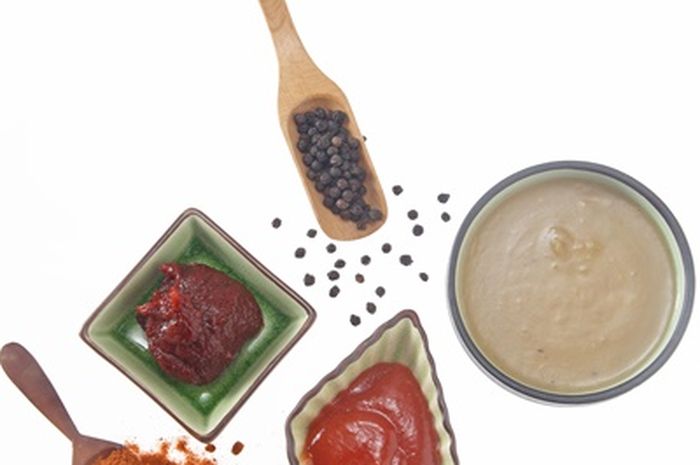
Kitchenesia.com - Yes, when it comes to sambal, people do compare one another. Didn't you get the memo?
Thai Sriracha
Thai Sriracha is named after Si Racha, a city in Chonburi Provinces of Eastern Thailand, the place where this sauce may have been served for the first time.
Sriracha eventually screams the flavor essence of Thai food.
It is spicy and sour with a hint of sweetness, making it a good choice to serve on your salty dishes.
This condiment is made by fermenting the mixture of pureed chili pepper, vinegar, garlic, sugar, and salt.
Sriracha was purposely made as a dipping sauce for seafood.
However, we can find it in many dishes ranged from burgers, egg dishes, spring rolls, fried noodles, to even sweets.
Indonesian Sambal
Indonesian sambal refers to chili paste.
The Indonesian word “sambal” is originated from “sambel”, A Javanese word means “condiment”.
This fiery chili sauce is made with ulek or oelek which means grinding the ingredients using pestle and mortar.
Most sambal oelek sold in Asian market around the world is made only from chili pepper, salt, and vinegar.
However, in Indonesia, sambal has hundreds of variations since Indonesians often add terasi (shrimp paste), shallot, garlic, lime juice, tomato, candlenut, and even green mango to the sambal mix.
In brief, the variation has no end.
The Flavor
Due to their distinctive ingredients, sriracha and sambal are absolutely differ in flavor.
Sriracha with its relatively high amount of sugar is sweeter than sambal.
We can smell the strong aroma of garlic in Sriracha when the aroma of pure chili pepper is more dominating in sambal.
On the contrary, since sambal has less sugar or even no sugar in it, sambal tastes more savory than sriracha.
The Texture
As mentioned above, sambal is made by grinding it with pestle and mortar.
The grinding process gives chunkier texture to sambal.
On the other side, sriracha is pureed with machine so that it has the consistency of smooth and thick sauce.
The Fermentation Process
While sambal does not need the fermentation process and an be eaten right away after grinding, sriracha has to be fermented in dark and cool area for some days until it is bubbly and the flavor is developed.
The fermentation process gives sriracha more acidic flavor.
Nevertheless, sambal can be acidic as well, but the sour taste comes from lime juice or vinegar.
The Verdict: Which One is Better?
Due to their differences, deciding which one of sambal and sriracha is better than the other is surely a difficult task, isn’t it?
It fully depends on your taste preference.
If you like chunky texture and more kicking heat on your dish, go with sambal oelek.
However, if you like hot sauce with medium heat along with smooth and ketchupy consistency, choose sriracha instead.






